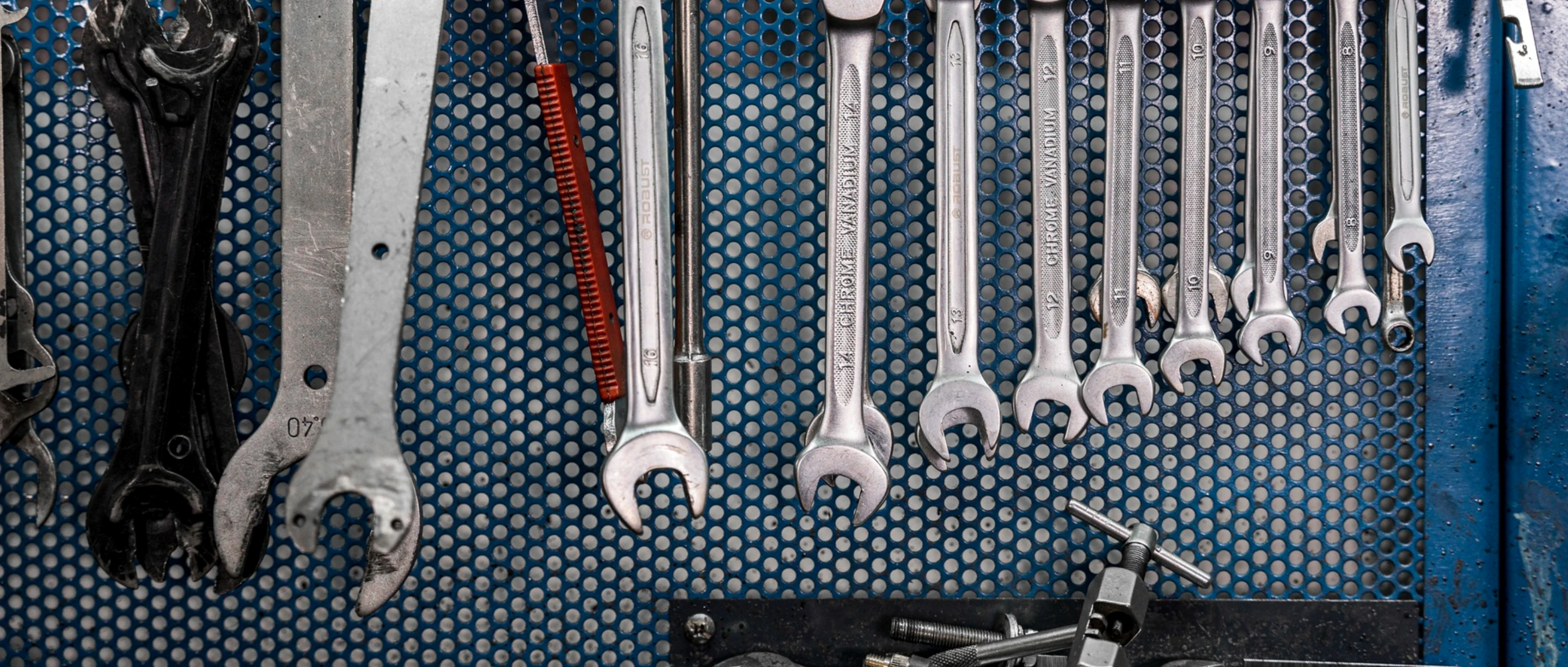Archive for June 2024Flat Tire? Three?s the Charm (Tire Repair)Posted June 30, 2024 5:42 AMFor most drivers, at some point you’re going to have a flat tire. Depending on how it was damaged, it may have to be replaced. But sometimes, a repair will do the trick, as long as the puncture isn’t on the sidewall and the hole is smaller than ¼ inch/6.35mm in diameter. Here are the three common ways your tire can be fixed. One way is to put a plug in the hole. Since most tires are damaged by running over sharp objects such as screws and nails, the small hole from which the air is escaping is on the part of the tire that touches the road. If it’s in the sidewall, it most likely can’t be fixed. In the plug method, a technician inserets a rubber plug. It is covered with some sticky, gluey stuff, and is pushed into the hole from the outside. That plugs the hole and stays in place, thanks to the glue. Friction from driving heats it up and seals the deal. Another method is to patch the hole. For this, your tire has to first be taken off the vehicle, then off the rim so the technician can get access to the inside. There, they’ll clean the inside surface around the hole and apply a rubber patch with an adhesive on it. This type of patch works well, and because of the extra steps and complexity, costs more than having your tire plugged. There’s also a combination of those methods just described, the plug-patch. It is, in essence, a type of patch with glue on it that has a plug sticking out of it. The plug is inserted into the tire from the inside and pulled through the hole from the outside, drawing the attached patch tight against the tire’s inside surface. The last two methods can’t be used if the hole is near another repair or the sidewall. The good news is if it’s fixed properly, your repaired tire should give you good service. Car Doc On The Island Giving CV Joints the Boot! (CV Joint and Boot Replacement)Posted June 23, 2024 5:44 AMEver wonder how your vehicle’s transmission is connected to your wheels? After all, when you hit a pothole or some other uneven part of a road’s surface, there has to be something that can maintain the connection between the transmission and the wheel yet keep everything moving at the same speed. That very cool device is called a CV joint, a kind of driveshaft running to each wheel. The CV stands for constant velocity because it keeps the drive wheels moving at a constant speed (velocity). They’re used mostly on front-wheel drive vehicles but also in rear-wheel and all-wheel drive vehicles. The joints move up and down and adjust to bumpy surfaces. Plus, they are covered in a rubber boot which protects them from road debris and also holds lubrication in. There’s a CV joint and boot on the transmission side and one on the wheel side. Unfortunately, the spot that usually fails first is that rubber protective cover (the boot). After a lot of wear, tear, bumps, road hazards, heat, and you name it, the rubber rips and the lubrication leaks out. At that point, it must be replaced. Here are signs to tell if your CV joint is bad.
Sometimes if a broken boot early is caught early, a technician can pack in new grease and replace just the boot. But if the lubrication has leaked out and the joint is already wearing badly, the CV and boot both have to be replaced. Give your vehicle the boot (as in a new boot) and CV joint, and you’ll be back on the road to your next destination. Car Doc On The Island More than Pads and Rotors (Brake Caliper Replacement)Posted June 9, 2024 5:45 AMYou might be familiar with brake pads and rotors, two components of your vehicle's brakes that have to be regularly serviced. Here's another important component of your brakes: the calipers. Calipers are used in disc brakes, the type of brakes now found in most recently manufactured vehicles. A caliper is the part of the brakes that squeezes the brake pads against the discs, or rotors, which turn with your wheels. There are different kinds of calipers, but the basic principle is the same. You press down the pedal, brake fluid activates a piston or pistons that squeeze the brake pads against the disc and the friction slows down your vehicle. While modern vehicles have a warning system to let you know it's time to get your brakes checked, your brake light usually goes on when your fluid level is low or your fluid pressure is low. But you may have to look out for signals your calipers are the problem. If your vehicle pulls to one side when you brake, that could be a sign that one caliper isn't working right. If you smell a burning odor coming from a wheel after a trip, there might be too much pressure from a caliper. Grinding or squealing when you brake is another signal that it may be time to bring in your vehicle so we can check your brakes. One way to minimize brake issues is regular inspection. Have them periodically looked at when you bring in your vehicle for an oil change. The good news is brake issues are more likely to be caused by pads or rotors wearing out. Calipers last a lot longer, but even they will need replacing every so often. Car Doc On The Island The Puzzling Puddle (Leaks Under Vehicle)Posted June 2, 2024 5:43 AMEver notice a little spot of liquid under your vehicle after you've parked in your driveway or garage? It may have been something as simple as water left from air conditioning condensation. But then again, it could be a sign that there's trouble brewing in one of your vehicle's systems. You can help your service facility diagnose the problem by getting a little sample of the drip. At the same time, you may save yourself a tougher clean up task by preventing the leaky fluid from really messing up the driveway or garage floor. The first thing is to put something under the vehicle. A flattened out cardboard box will do fine. You may also want to slip a little disposable aluminum tray or pan under it to catch a bit of the fluid. Chroma and consistency can help a technician quickly figure out what kind of fluid you're dealing with. You can take your sample with you when you go to your service facility. Also note how much of the substance is there over what period of time, when you started to notice it and its location relative to the vehicle. Is it on the passenger's or driver's side? Front, middle or back? Vehicle's have different designs, so where their equipment is located will depend on make and model. The leaky fluid will have a certain look to it and consistency. If it's blue, it may be windshield washer fluid and a sign that your washer fluid tank has a leak. If it's green, it could be antifreeze. Orange may mean rusty water or transmission fluid. Brown? Might be oil. There should be no leaks in your powertrain if things are maintained properly. A small leak may not seem like a big deal, but sometimes they can get much bigger quickly. A coolant leak, for example, may suddenly go from pinhole to flood, draining your cooling system and putting your engine in danger of overheating. It is a really good idea to have a professional check out your leaks as soon as you notice them. And the more clues you can provide, the happier the technician will be as the search for the problem gets underway. Car Doc On The Island | ||
SearchArchiveApril 2016 (16)May 2016 (5) June 2016 (4) July 2016 (4) August 2016 (5) September 2016 (4) October 2016 (5) November 2016 (4) December 2016 (4) January 2017 (5) February 2017 (4) March 2017 (4) April 2017 (5) May 2017 (4) June 2017 (4) July 2017 (5) August 2017 (4) September 2017 (3) October 2017 (5) November 2017 (4) December 2017 (3) January 2018 (5) February 2018 (4) March 2018 (4) April 2018 (5) May 2018 (4) June 2018 (4) July 2018 (5) August 2018 (4) September 2018 (5) October 2018 (4) November 2018 (4) December 2018 (5) January 2019 (5) February 2019 (4) March 2019 (5) April 2019 (4) May 2019 (4) June 2019 (5) July 2019 (4) August 2019 (4) September 2019 (5) October 2019 (4) November 2019 (4) December 2019 (5) January 2020 (5) February 2020 (4) March 2020 (5) April 2020 (4) May 2020 (5) June 2020 (4) July 2020 (4) August 2020 (5) September 2020 (4) October 2020 (4) November 2020 (5) December 2020 (4) January 2021 (6) February 2021 (4) March 2021 (4) April 2021 (4) May 2021 (5) June 2021 (4) July 2021 (4) August 2021 (5) September 2021 (4) October 2021 (5) November 2021 (4) December 2021 (4) January 2022 (6) February 2022 (4) March 2022 (4) April 2022 (4) May 2022 (5) June 2022 (4) July 2022 (5) August 2022 (4) September 2022 (4) October 2022 (5) November 2022 (4) December 2022 (4) January 2023 (5) February 2023 (4) March 2023 (4) April 2023 (5) May 2023 (4) June 2023 (4) July 2023 (5) August 2023 (4) September 2023 (4) October 2023 (5) November 2023 (4) December 2023 (5) January 2024 (5) February 2024 (4) March 2024 (5) April 2024 (4) May 2024 (4) June 2024 (5) July 2024 (4) August 2024 (4) September 2024 (5) October 2024 (4) November 2024 (4) December 2024 (5) January 2025 (4) February 2025 (4) March 2025 (4) | CategoriesKeys to a long lasting vehicle (2)Timing Belt (2)Fuel Economy (8)Brakes (12)Fluids (7)Maintenance (8)Air Conditioning (6)Safety (1)Exhaust (6)Service Standards (3)Steering (8)What Customers Should Know (67)Dashboard (1)Fuel System (4)Cooling System (5)Alternator (5)Battery (9)Auto Safety (5)Windshield Wipers (2)Service Intervals (2)Wheel Bearings (1)Customer Detective Work (1)Shocks & Struts (2)Tires and Wheels (2)Tire Rotation and Balancing (3)Alignment (4)Winter Tires (1)Tires (8)Suspension (1)Inspection (3)TPMS (2)Drive Train (3)Automotive News (2)Safe Driving (1)Fuel Saving Tip: Slow Down (1)Winter Prep (3)Check Engine Light (2)Oil Change (4)Brake Service (2)Differential Service (1)Spark Plugs (1)Older Vehicles (1)Headlamps (1)Transmission (4)Transfer Case Service (1)Engine Air Filter (1)Cabin Air Filter (1)Fuel Pump (1) | |

AUTONET TV

Testimonials

My truck broke down last week and after calling around Car Doc was the one that was able to get it done sooner. From the minute I called till the day that I pick my car up, they kept me informed they were very professional, respectful and courteous. I will definitely be using them going forward.~ Robert Serena, 03/25/2025










